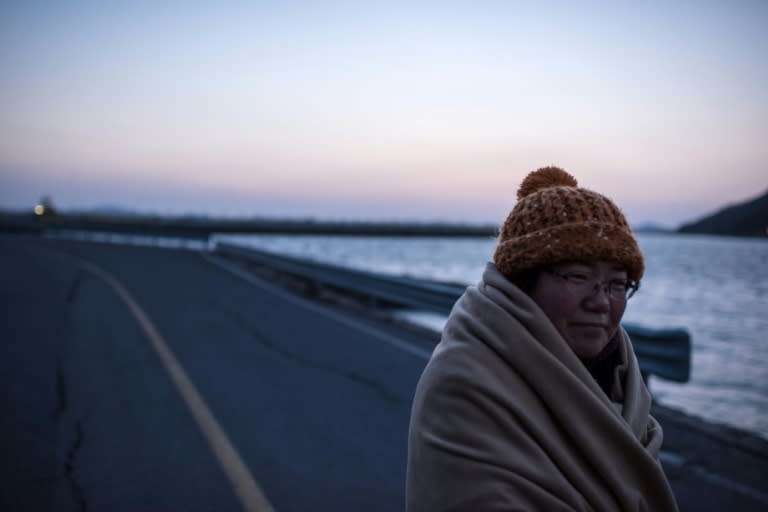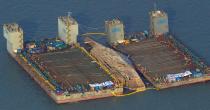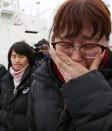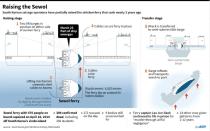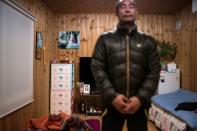Hopes and fears meet for Sewol parents as ferry emerges
Huddled in makeshift shipping container homes on a South Korean waterfront, the relatives of the missing from the Sewol ferry disaster have endured a harrowing wait to recover their dead children. Nearly three years ago Lee Keum-Hui's daughter Eun-Hwa went on a school trip and never returned. Lee rushed to Jindo, a five-hour drive from the family home in Ansan, on the day the Sewol sank, hoping to bring her frightened daughter home. She has lived at Paengmok harbour, the closest port to accident, ever since, unable to begin mourning. "I had brought a change of clothes for my daughter... But I have been waiting for more than 1,070 days now," said Lee, recalling the night she first stared blankly out at the dark sea that had taken her 16-year-old. Eun-Hwa is one of the nine victims whose bodies could still be trapped inside the Sewol, the 6,825-tonne ferry that emerged from the murky depths on Thursday. The vessel was carrying 476 people when it went down off the southwestern island of Jindo, leaving 304 people dead -- almost all of them schoolchildren -- in one of the country's worst maritime disasters. "Time has stopped at April 16, 2014," Lee said. Lee and her husband, along with four other relatives of missing victims, set up temporary homes on a gravel lot near Paengmok harbour. The wind rattles the stones, and their showers are ice cold even in the depths of South Korea's chilly winter. "That's nothing compared to what our daughters have to go through," said Park Eun-Mi, the mother of another missing student, Huh Da-Yun. "They're in freezing cold water." Winter jackets, scarves and jeans hang in the shipping container where she lives with her husband Huh Hong-Hwan, a former steelworker. A sleeping bag is neatly laid out on the floor. A small caricature portrait of Da-Yun drawn by a wellwisher hangs on a wall, below her school ID card. - 'Let's go home' - In Korean culture, family members stop mourning for the dead after three years, but the relatives at Paengmok feel that without their children's bodies, they were never given a chance even to begin. "People treat us as one of the bereaved families, but we are different," said Eun-Hwa's father Cho Nam-Seong. Walking down the harbourfront towards a lighthouse painted with a giant yellow ribbon -- a symbol for the victims of the disaster -- Lee stopped and read out the banners hanging on each side of the path. - 'Unimaginable' fear - "This is my favourite," Lee says, pointing to one proclaiming: "Let's go home with mom." Heavy rain pounded on Lee's yellow umbrella and strong gusts of wind blew in her face as she walked past another poster bearing a picture of her daughter. "My only wish is to be able to hold her in my arms again," she said, her voice trembling. The Sewol was finally brought to the surface on Thursday. Salvage experts plan to transfer it to the nearby port of Mokpo, where it will be thoroughly searched. The relatives have been waiting for three years for the vessel to be raised, but a sudden sense of fear overtakes them when they think about the possibilities. "We are scared that our children may not be there, but we are holding onto the tiniest strand of hope that we will find them," said Lee, breaking into tears. "That sense of fear is unimaginable." Even if Eun-Hwa's body is finally recovered, Lee said it would be difficult to move on and return to her home in Ansan, south of Seoul, where Eun-Hwa's room is still being kept. "That is where I spent time with Eun-Hwa, so her absence will be even greater," she said. "But when I think about how Eun-Hwa would want her mom to live, she will want her mom to smile more, be happier and hurt less."




